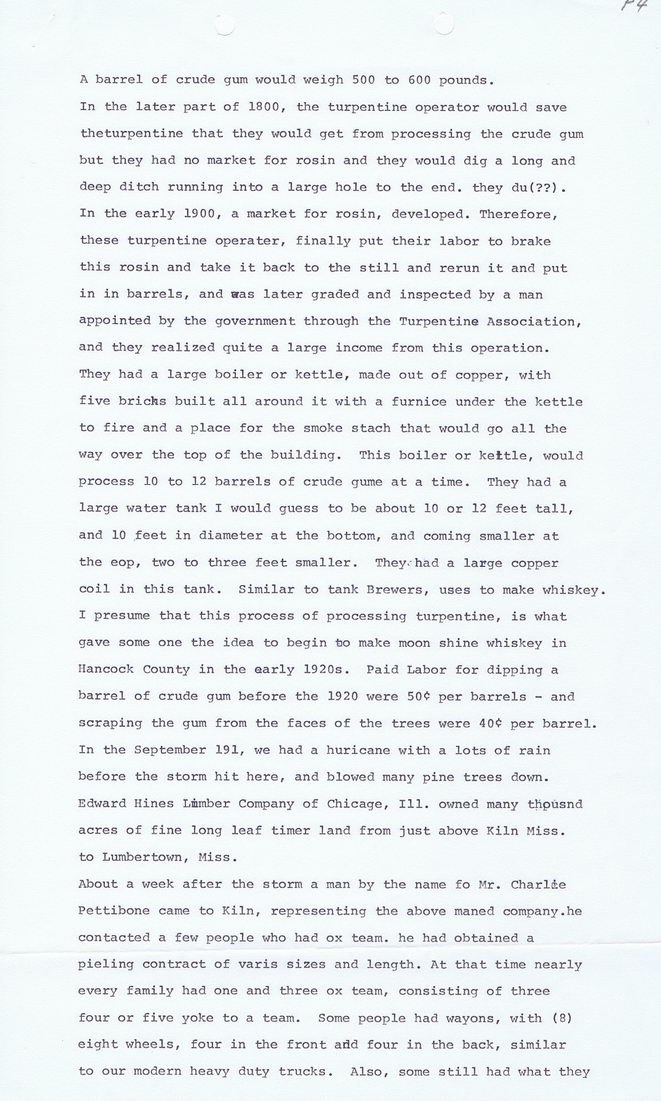This text was obtained via automated optical character recognition.
It has not been edited and may therefore contain several errors.
A barrel of crude gum would weigh 500 to 600 pounds. In the later part of 1800, the turpentine operator would save theturpentine that they would get from processing the crude gum but they had no market for rosin and they would dig a long and deep ditch running into a large hole to the end. they du(??). In the early 1900, a market for rosin, developed. Therefore, these turpentine operater, finally put their labor to brake this rosin and take it back to the still and rerun it and put in in barrels, and was later graded and inspected by a man appointed by the government through the Turpentine Association, and they realized quite a large income from this operation. They had a large boiler or kettle, made out of copper, with five bricks built all around it with a furnice under the kettle to fire and a place for the smoke stach that would go all the way over the top of the building. This boiler or kettle, would process 10 to 12 barrels of crude gume at a time. They had a large water tank I would guess to be about 10 or 12 feet tall, and 10 ,feet in diameter at the bottom, and coming smaller at the eop, two to three feet smaller. They^had a large copper coil in this tank. Similar to tank Brewers, uses to make whiskey. I presume that this process of processing turpentine, is what gave some one the idea to begin tio make moon shine whiskey in Hancock County in the early 1920s. Paid Labor for dipping a barrel of crude gum before the 1920 were 50C per barrels - and scraping the gum from the faces of the trees were 4 0C per barrel. In the September 191, we had a huricane with a lots of rain before the storm hit here, and blowed many pine trees down. Edward Hines Lmmber Company of Chicage, 111. owned many thpusnd acres of fine long leaf timer land from just above Kiln Miss, to Lumbertown, Miss. About a week after the storm a man by the name fo Mr. Charl&e Pettibone came to Kiln, representing the above maned company.he contacted a few people who had ox team, he had obtained a pieling contract of varis sizes and length. At that time nearly every family had one and three ox team, consisting of three four or five yoke to a team. Some people had wayons, with (8) eight wheels, four in the front add four in the back, similar to our modern heavy duty trucks. Also, some still had what they

Moran, Sylvester G. Sylvester-Moran-Family-part4